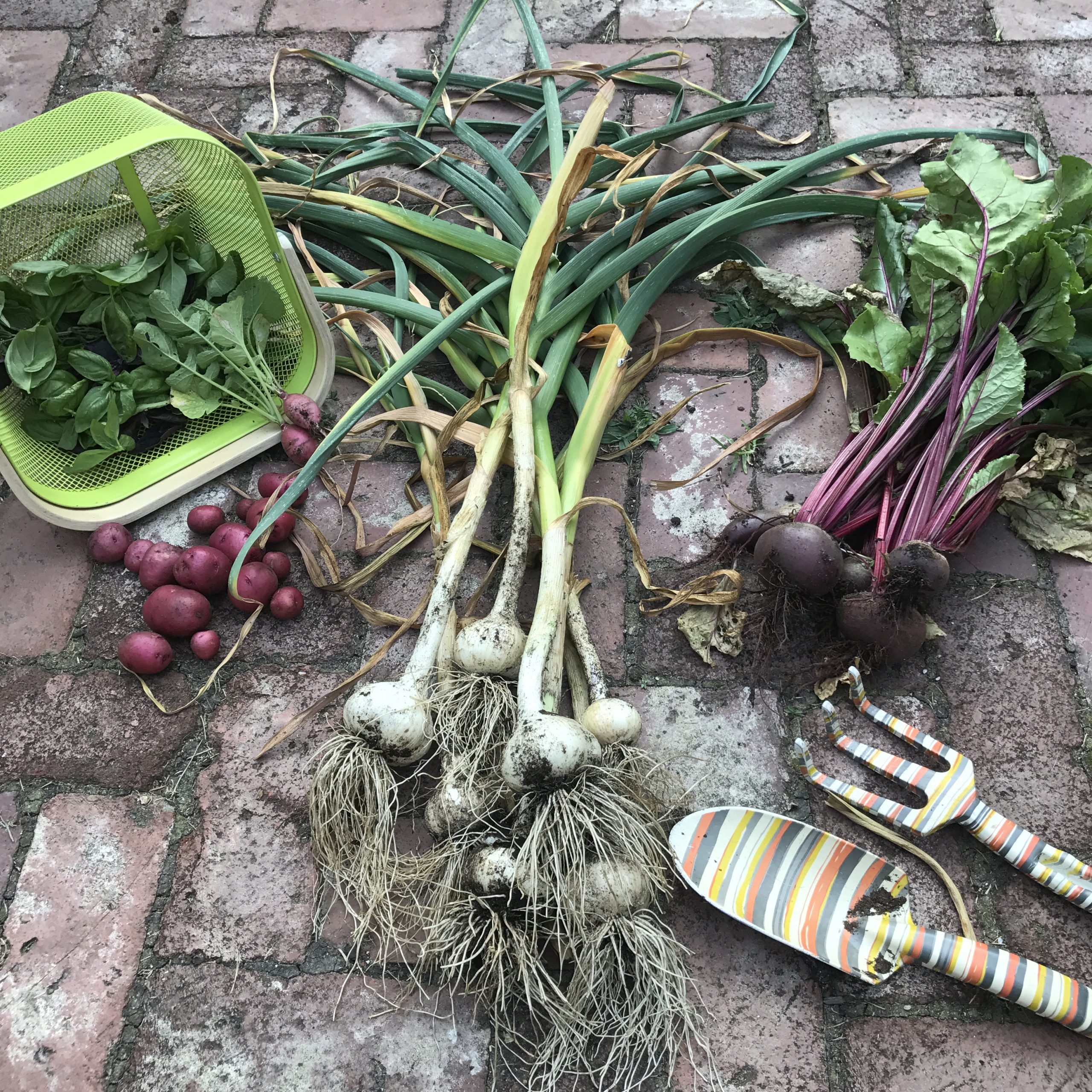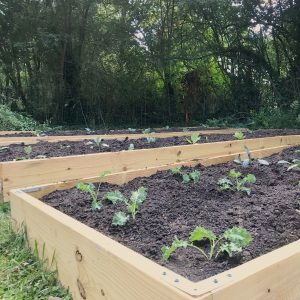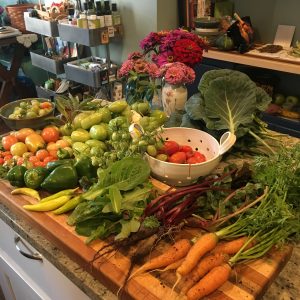Just as summer’s bounty is showing off, it’s actually time to start thinking about your fall garden. If you’re like me, you want to get the most bang for your buck- or, in this case, the most food from your soil.
But what do I plant in a fall garden?
When planning for your garden anytime, it’s best to be familiar with your local growing zone. You can find that info here. Keep in mind that there are microclimates that occur within every zip code, and even within your neighborhood, or even within your yard! But this gives you a great guideline on what you can plant and when, specific to where you live.
Overall, you want to think about cool weather crops for your fall garden. Crops such as greens and cabbages. You can also get more radishes back in the garden, as they tend to bolt quickly in the warm summertime sun. I’ve provided a list of suggested fall crops below.
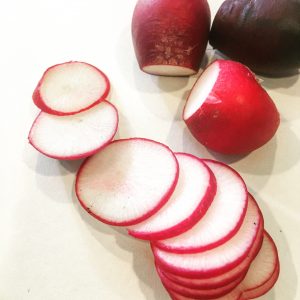
You can choose to start your seeds inside under grow lights, or a greenhouse if you have it, and transplant them once they are seedlings. Or you can likely find plant starts at your local farmer’s markets. For example, it’s best to transplant cabbages, lettuces, and broccoli as seedlings. But there are also lots of fall crops you can direct seed, meaning you can put the seeds right into your garden bed and they will germinate from there. For example, you can direct seed carrots and radishes.
In my zone 7A here in Asheville, I’m starting my seeds for transplanting indoors in mid-July, and will direct sow somewhere between mid to late August. I’m also going to get some carrot successions started again in July, which means that I plant a row of carrots every 2 weeks, which will give me a continuous small harvest of carrots rather than one large harvest all at once.
If you haven’t already, you might want to check your seed collection and fill in anything you’re missing for your fall garden. I just placed an order with High Mowing Seeds, which is an awesome farm in Vermont who provides high quality seeds that I’ve seen lots of success with over the years. You can also check your local co-ops, and gardening stores for seeds.
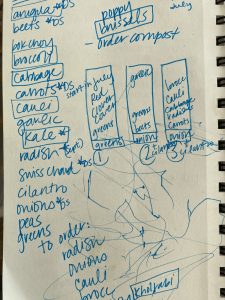
Leah’s notebook with a scribbled list of possible crops, a seed order list, and a quick scribble planning out the space. And of course, no surface is safe from toddler scribbles right now 🙂
How will I have space for fall gardening?
Space can be a tricky thing when it comes to transitioning your garden from summer to fall. Your tomatoes are likely becoming forests, and your peppers are still expanding. Depending on your space, you may need to remove productive plants that are nearing the end of their cycle, in favor of starting new plants for the upcoming season. If you succession plant your radishes, carrots, and greens, then you likely have that space freed up to start the new fall plantings of radishes, carrots and greens. Just make sure that the shorter seedlings you’ll be starting will have plenty of sunlight and won’t be in the shadow of tall tomato plants.
When planning your fall garden space, you may want to consider your long game for next summer, and decide now if you’d like to grow and harvest garlic next year. Garlic is a long season crop, and I mean really long. You plant it in October/November and then it’s ready for harvest the following June and July. If you’d like to have garlic next year, it’s best to plan for it now. You’ll need to gather seed garlic, and you’ll need to consider the space it will take up in your garden from fall until next summer. I will have a blog dedicated just to Garlic in the pipeline, so stay tuned if you’re interested in learning all about growing your own garlic.
If you’re going ahead and ordering any seeds now, you’ll find lots of beautiful garlic varieties from High Mowing Seeds. Or if you shop for garlic at your local Farmer’s Market, ask the farmers if they have a variety they can recommend to you to use as seed. Garlic “seeds” are just the individual cloves. But you want to make sure you start with a good, hardy, and organic head of cloves.
Feeding your Soil
For your best bet at a productive fall garden, you’ll want to prep the soil a bit. Mix in some compost, 1-3 inches, and then add some fresh soil, then you can mulch more compost around what you’ve grown. Soil conditioner is also a great option to mix up in your raised beds if you’re going that route. If your space is limited and you’ll be removing plants to make room for new seedlings, then you’ll have special considerations on how to make a smooth transition for your soil. Your summer plants were likely heavy feeders- squashes, tomatoes, peppers, beans- they all eat a lot and don’t always give back to the soil.
And keep in mind that building your soil takes time. If this was your fist season gardening, first off- congratulations!- just know that building your soil will be a continuous process. And in my experience, it took several growing seasons before I really started to see a big difference in the soil and therefore my garden’s output.
For my fall transition this year, I’m opting for the no-till method. In this method, the theory is that the roots from the plants will break down over time, providing food for the microorganisms and worms that live underneath, and they will in turn provide nutrients to my soil. Instead of removing old plants root ball and all, I’ll chop the plants down at the base, leaving the roots undisturbed, and therefore leaving the living soil ecosystem underneath undisturbed. I’ve added fertilizer and compost tea throughout the growing season, and all of those are helping to create a healthy soil ecosystem over time.
So, when it’s time to transition, I’ll add layers of compost and soil on the top of my raised beds. I’ll include some balanced fertilizer while planting to give a boost to the seedlings.I’ll mulch around the plants with more compost and a top layer of grass clippings as a top mulch. All of this will help create a healthy environment for my new fall garden and get it off to a strong start.
Let’s do this!
I hope you feel excited about this next transition in your garden! It’s exciting to know that the fun doesn’t have to end too soon! As always, you can follow along with our day-to-day gardening adventures, as well as tips +tricks on our Instagram, so give us a follow! It’s also a great space to ask questions as they come up for you!
List of Plants for Fall Gardening:
Arugula*
Beets*
Bok choy
Broccoli
Brussel sprouts
Cabbage
Carrots*
Cauliflower
Garlic
Kale*
Kohlrabi
Radish*
Swiss chard*
Cilantro
Onions*
Peas
*=direct seeding is suggested

